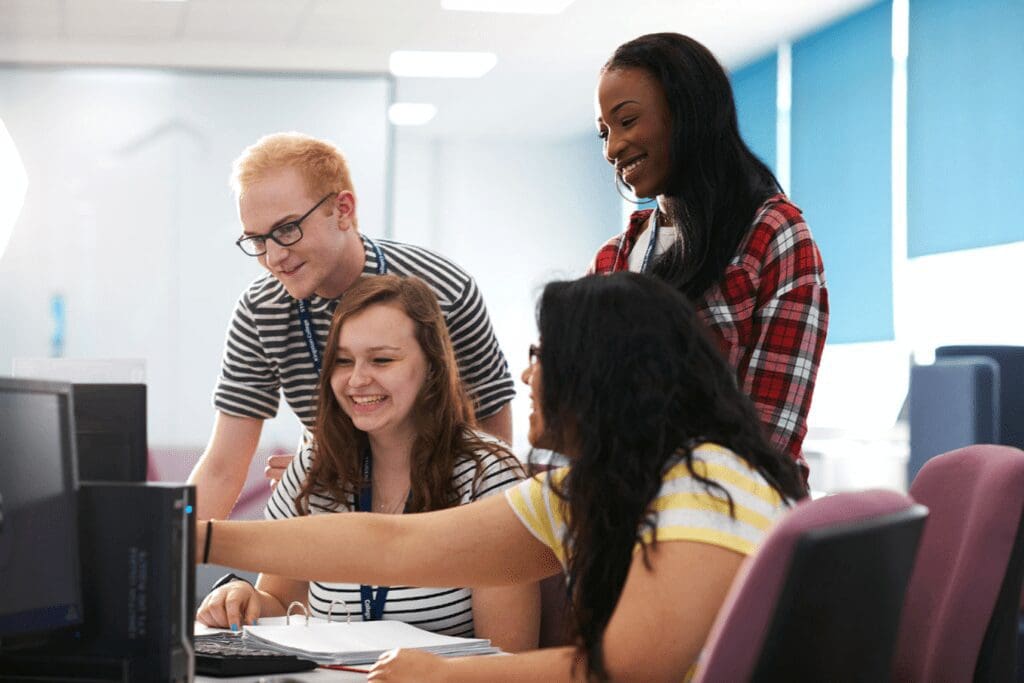Teachers and mentors are very different things. While the terms “teacher” and “mentor” are sometimes used interchangeably, this doesn’t reflect the expertise and purpose of each role.
While they may share similarities (and teachers are expected to also be mentors more and more), there are also huge differences. Understanding these differences is essential to clarify expectations and form a cohesive, collaborative working relationship to benefit the young person.
What is a Teacher?
If we’re looking for a definition, a teacher is someone who facilitates student learning in a particular discipline. This job involves a lot of specific tasks such as creating resources and giving feedback, all of which are outlined in the Teacher Standards.
Teachers develop an understanding of concepts and proficiency in particular skills for their students. Learning is not something that is done to the students by the teacher. Students need to be active participants in the learning process, so teachers also need to build strong and trusting relationships with the young people in their classrooms.

There are limits to a teacher’s role, though. A teacher needs to remain professional and not develop too close of a relationship with their students. They need to be someone that their students can trust and rely on, but they also need to have some power over their students.
Student behaviour is often a barrier to their learning. A teacher cannot be a student’s best friend because then it becomes very difficult for them to learn.
See more: 7 Weird but Genius Study Tips – Work Smarter, Not Harder.
What is a Mentor?
On the other hand, a mentor is someone who provides guidance and support in a wide range of contexts and situations. Mentors can have more experience and expertise in their own field than teachers, so can offer a different perspective and guidance.
Mentors can be formal, which is often used in workplaces for new graduates or staff. Mentors can also be informal, between a person who wants to learn more and someone who they look up to.
Mentors don’t necessarily have the same purpose as teachers. While every teacher is trying to get similar concrete outcomes (like improved grades), a mentor’s goals can be more flexible. Mentors can help young people get a job, build a skill, become more confident or generally navigate through life.

See more: The Difference Between Being a Tutor and a Mentor.
Scope of Expertise
Teachers are experts in their subject area. Their expertise is quite limited, but also very specific. If you go to your Maths teacher, you can be fairly certain that they know a bit about Maths.
Mentors can have different areas of expertise. A mentor may be really skilled at networking or have navigated a certain career or system before. In this sense, a mentor can have a broader range of experiences and expertise.
Mentors can also have far more niche expertise as well. A mentor may be an expert in a rare programming language or workplace etiquette. An appropriate mentor will depend entirely on what the mentee needs, whereas a teacher has a more defined role and follows a curriculum that dictates what the student needs to learn.
See more: Writing Good Notes as a Mentor Teacher.
Goals
Teachers are often focused on helping their students achieve academic goals. Whether they want a better grade or to get into their preferred university, a teacher can help. Because teachers have certain curricula and standards that they need to follow, they may have limited capacity to help their students with more specific, personal goals.

Don’t get me wrong, many teachers will try. Most teachers are very invested in helping their students build life skills and improve their well-being, but this is not their core job. They are limited by the number of hours that they have in the day, and how many of them they need to spend actually teaching.
Mentors, on the other hand, have time to focus more specifically on what the young person wants to achieve. This could be a small goal like writing a resume, or a broader goal like reaching a specific position in a company. Mentors don’t have external criteria to follow, and so they can spend all of their time with their mentees on these personal goals.
See more: Work Ethic of Gen Z Students – Are they Different from Other Generations?
Relationships
Teachers and students typically have a quite formal relationship. There needs to be a power dynamic there; a teacher’s job is literally to manage the behaviour and judge the work of the student.
In a mentor/mentee relationship, there is less likely to be a power dynamic. Or at least, it isn’t essential for the relationship to work. Your mentor should not be your boss or someone who is going to formally judge your performance. This allows the mentee to feel completely safe being open and asking any questions that they have.
This does mean that a mentor/mentee relationship can be closer and more like a friendship. We’ve all heard about students who have called a teacher “mum” before, which says a lot about that type of relationship.
See more: 7 Ways to Build a Strong Relationship With Your Mentor Teacher.
Time Commitment
Teachers are given a set amount of time to spend with their students. They are given specific lessons, and a number of other students to look after at the same time. This means that sometimes the student might need more time with their teacher than is possible, and sometimes they may need less than they are getting.
Mentorships are a lot more flexible. You could arrange to meet with your mentor when it fits with both of your schedules, and this might change from week to week. This type of relationship is much more collaborative and tailored to the mentee’s needs.
One downside of having a mentor is that you cannot guarantee how much time they will have to support you. With teachers, you can guarantee that they will be able to find some time to help you every week if not every day. Mentorship programs vary widely, and your mentor may not be given any additional time to be a mentor.

See more: 6 High-Impact Teaching Strategies that take 30 Seconds or Less
Approach
Teachers need to be structured in the programs that they deliver and in how they work with students. They don’t just need to prepare their students for work or other aspects of life, but for very specific tests and metrics. In Australia, teachers need to teach within certain rules to make sure that University entry is fair for everyone. They can’t give extensions to deadlines, increase word counts, or give any special provisions without checking with the authority in the specific state.
Mentors may have rules and restrictions placed on their approach, but these are often determined by each company or organisation that the mentors are a part of. This means that the mentors (and mentees) have a lot more power to change or alter the program to fit their needs. The focus isn’t on making everything standard and fair, but on supporting the individual to grow in the areas that they want to.
For students, having both a teacher and a mentor can be beneficial. Teachers can help with academic progress and subject-specific knowledge, while mentors can provide guidance and support on a range of topics beyond the classroom. By developing relationships with both teachers and mentors, students can gain a well-rounded education and build a supportive network of professionals.





